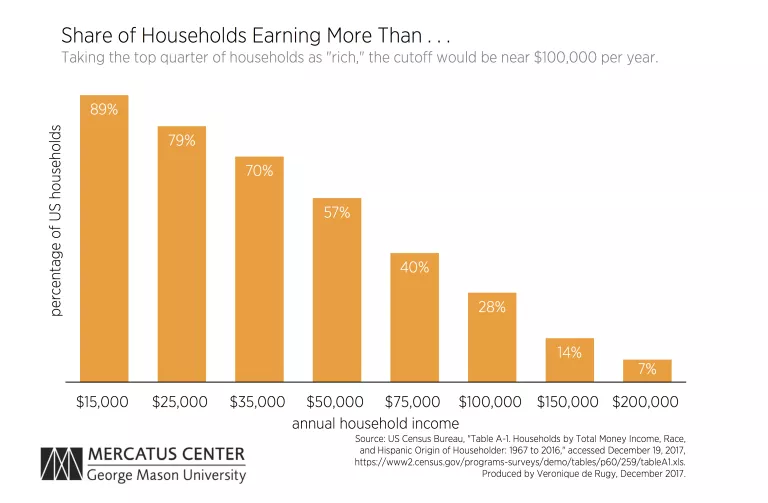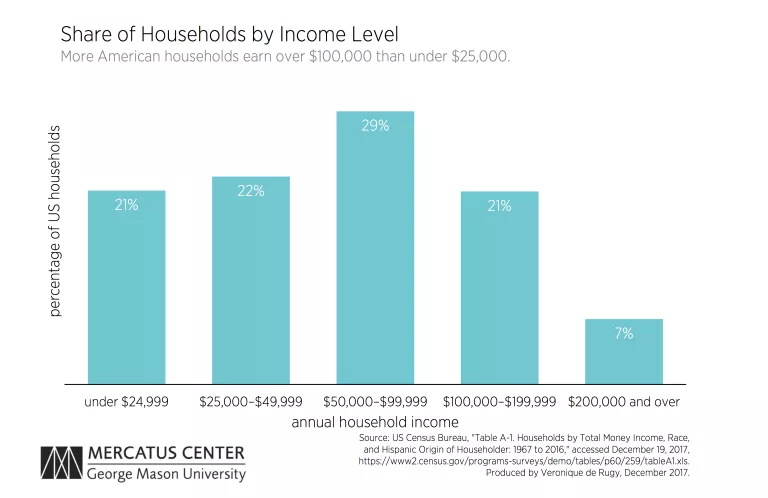- | Government Spending Government Spending
- | Data Visualizations Data Visualizations
- |
What Defines “the Rich”?
Discussions about the distribution of income taxes in the United States usually focus on what shares are paid by the rich, the middle class, and the poor. But before we can determine how much each group pays, we must better define these vague terms.
According to the US Census, 7 percent of households earn over $200,000 annually, 14 percent earn over $150,000, and 28 percent earn over $100,000. It is interesting that, for each additional $50,000 earned, the proportion of Americans earning that much or more drops by half.
Taking the top quarter of households as “rich,” the cutoff would be near $100,000 per year. This definition would include a married couple in which each spouse earns $50,000 per year, despite not meeting most stereotypes of “the rich.”



